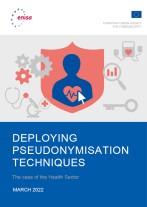
This report provides technical guidance to support the implementation of the NIS2 Directive for several types of entities in the NIS2 digital infrastructure, ICT service management and digital providers sectors. The…
This report provides technical guidance to support the implementation of the NIS2 Directive for several types of entities in the NIS2 digital infrastructure, ICT service management and digital providers sectors. The…
The NIS360 is a new ENISA product that assesses the maturity and criticality of sectors of high criticality under the NIS2 Directive, providing both a comparative overview and a more in-depth analysis of each sector. The NIS360 is designed to…
This document marks the first report on the state of cybersecurity in the Union, adopted by ENISA in cooperation with the NIS Cooperation Group and the European Commission, in accordance with Article 18 of the Directive (EU) 2022/2555 (…
This document gives guidance on building zones and conduits for a railway system. To do so, first the methodology is described. This approach is based on the recently published CENELEC Technical Specification 50701 (CLC/CLC/TS 50701:2021).
Pagination